Color is known to affect our moods and emotions, so it makes sense to rely on color as a key element in your painting for conveying meaning or depicting an atmosphere. But color selection is an important process. You want the colors you are using to work well together, and it can be confusing at first to know how many colors to use and which ones work together. Understanding color theory is an excellent way to simplify those decisions, and I’m here to help you by breaking down the basics of color theory in painting.
Photo via the Craftsy class Master Palettes: Exploring Color Mixing
A word about the color wheel
The first color wheel was made by Isaac Newton in the 17th century. Using a prism to decompose white sunlight into the colors of the spectrum, he then joined the two ends of the spectrum to form the wheel.
The color wheel used by artists today is the RYB color wheel (red, yellow and blue). It is a subtractive color wheel, which means that colors become darker when mixed. With an additive color wheel, colors made by a light source would get lighter as you mix them. The best example of this is on a computer screen.
Depending on the complexity of the color wheel, you will find a different number of colors. However, the simplest color wheels have 12 colors:
- The three primaries: That means colors that can’t be obtained by mixing other colors, all other colors on the wheel can be mixed from these three primaries.
- The three secondary colors: These are obtained by mixing two of the primary colors
- The six tertiary colors: Such colors are obtained by mixing two secondary colors contiguous on the wheel. That is, a tertiary color is obtained by mixing two secondary colors or one primary and one secondary color.
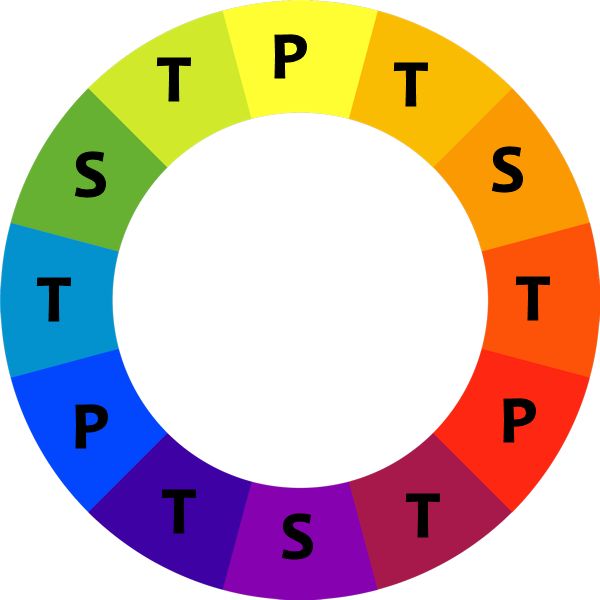
How to use the color wheel to select a beautiful, harmonious palette.
There are many combinations of colors or color schemes that will work for your painting. Here are three simple ways to find some of them by using the color wheel:
Analogous color scheme
Analogous colors are three or more colors that are next to each other on the color wheel, like the circles in the picture below. Using this type of color scheme makes the painting look harmonious, but the actual feeling conveyed will depend on the colors you chose based mostly on their temperature: warm colors versus cold colors.

Analogous color scheme via Wikimedia commons
In that scheme, one color is usually predominant, and it is usually the color in the center of the scheme. In the example below, light green would most likely be the predominant color, but there are also yellow and blue hues in the painting.
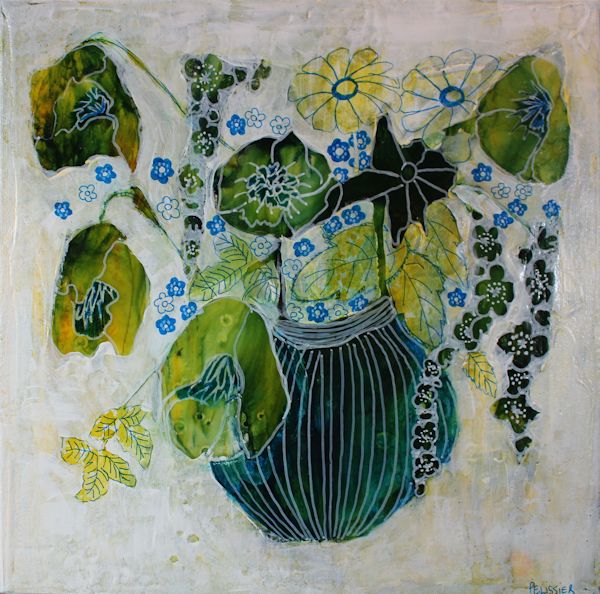
Green Bouquet via Sandrine Pelissier
This still life has an analogous color scheme with hues of yellow, blue and green.
Triadic color scheme
A triadic color scheme will include three colors from the color wheel that are equally spaced to form a triangle, or if you are using a 12 color wheel, the scheme would be comprised by selecting every fourth color on the wheel.

These are the four combinations of triadic colors you can get with a 12 colors color-wheel. You can get more combinations with a more complex color wheel.
When working with a triadic color scheme, usually one of the three colors is the dominant color. The other two will be used for contrasting accents.
You can mix a range of colors from the three colors you selected. Mixing the three colors together will give you interesting hues of brown.
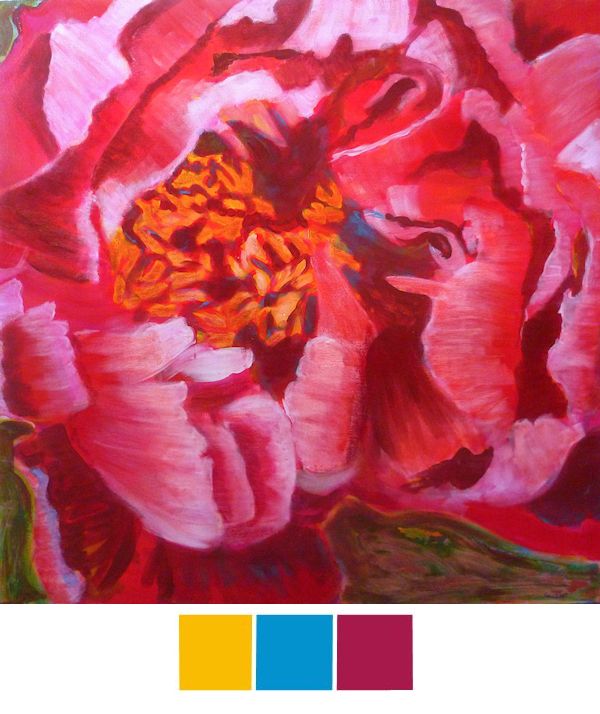 Blooming Peony by Sandrine Pelissier
Blooming Peony by Sandrine Pelissier
This painting is an example of a triadic color scheme.
Complementary color scheme
Complementary colors are colors that are located across each other on the color wheel. For example red-green, blue-orange, and purple-yellow.
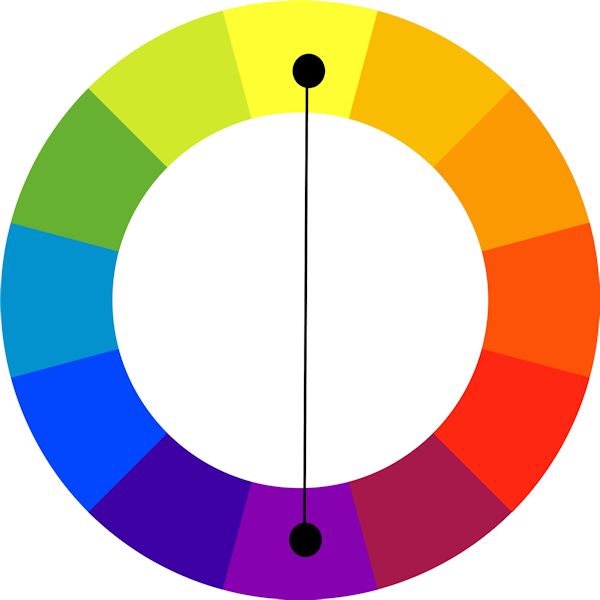
Complementary color scheme yellow-purple: The two colors are located across each other on the color wheel.
When a painting is made using a complementary color scheme, the result is usually very vibrant and high-contrast. As in the other color schemes, you will get better results if one of the colors is dominant while the other is used as an accent.
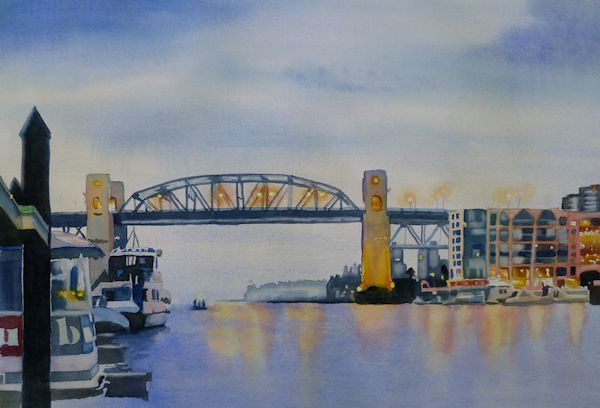
Ferry dock by Sandrine Pelissier
This painting uses hues of blue as the main “dominant” color with a mix yellow-orange accents.
Color theory is only the beginning! You can learn to utilize color like a master in the Craftsy class Painting With Color: A Contemporary Approach, as you begin to use color to expresses form, value and dimension in captivating ways!


Share tips, start a discussion or ask one of our experts or other students a question.
No Responses to “Color Theory In Painting: Analogous, Triadic and Complementary Colors Schemes”